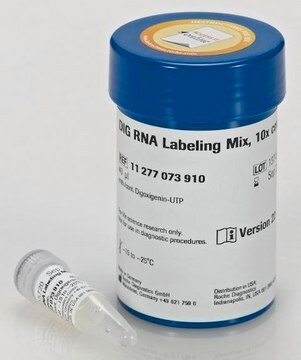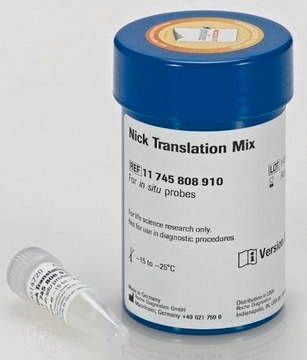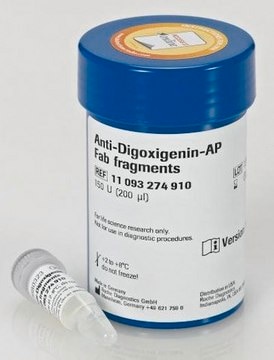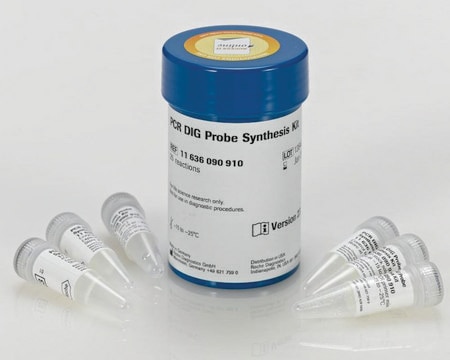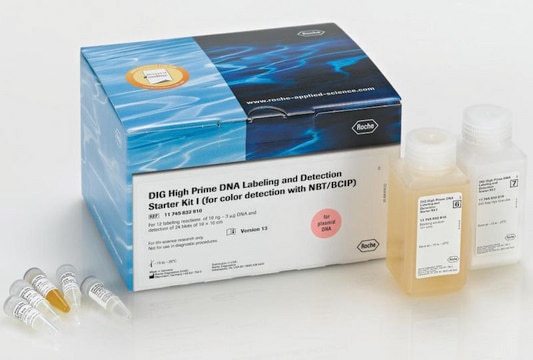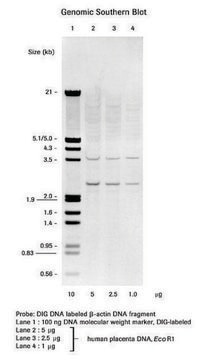11745816910
Roche
DIG-Nick Translation Mix
sufficient for 40 labeling reactions, pkg of 160 μL, suitable for hybridization
Synonym(s):
nick translation
About This Item
Recommended Products
form
solution
Quality Level
usage
sufficient for 40 labeling reactions
packaging
pkg of 160 μL
manufacturer/tradename
Roche
greener alternative product characteristics
Designing Safer Chemicals
Learn more about the Principles of Green Chemistry.
technique(s)
hybridization: suitable
greener alternative category
, Aligned
storage temp.
−20°C
General description
Specificity
Application
Note: The mix can also be used for filter hybridization techniques, however, for highly sensitive filter hybridization probes, we recommend that you use DIG-High Prime from Roche Applied Science.
For nonradioactive labeling of in situ probes with other haptens and fluorophores, Roche Applied Science offers the Biotin-Nick Translation Mix and the Nick Translation Mix (without nucleotides).
Quality
Principle
E. coli DNA Polymerase I synthesizes DNA complementary to the intact strand in a 5′→3′ direction using the 3′-OH termini of the nick as a primer. The 5′→3′ exonucleolytic activity of DNA polymerase I simultaneously removes nucleotides in the direction of synthesis. The polymerase activity sequentially replaces the removed nucleotides with isotope-labeled or hapten-labeled deoxyribonucleoside triphosphates. At low temperature (+15°C), the unlabeled DNA in the reaction is thus replaced by newly synthesized labeled DNA.
Preparation Note
Assay Time: 100 minutes
Sample Materials: Supercoiled and linearized plasmid DNA, Supercoiled and linearized cosmid DNA, Purified PCR products.
Note: Denaturing of the template before nick translation is not required.
Other Notes
Storage Class
12 - Non Combustible Liquids
wgk_germany
WGK 1
flash_point_f
No data available
flash_point_c
No data available
Certificates of Analysis (COA)
Search for Certificates of Analysis (COA) by entering the products Lot/Batch Number. Lot and Batch Numbers can be found on a product’s label following the words ‘Lot’ or ‘Batch’.
Already Own This Product?
Find documentation for the products that you have recently purchased in the Document Library.
Customers Also Viewed
Articles
Digoxigenin (DIG) labeling methods and kits for DNA and RNA DIG probes, random primed DNA labeling, nick translation labeling, 5’ and 3’ oligonucleotide end-labeling.
Our team of scientists has experience in all areas of research including Life Science, Material Science, Chemical Synthesis, Chromatography, Analytical and many others.
Contact Technical Service
